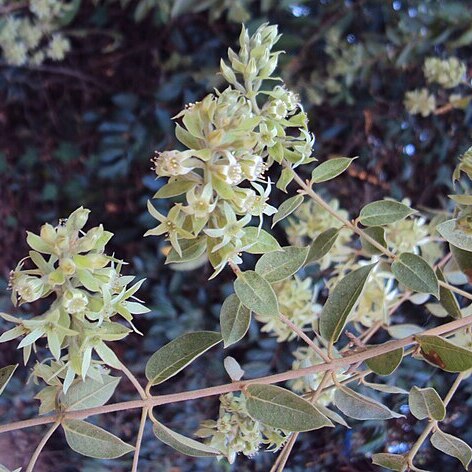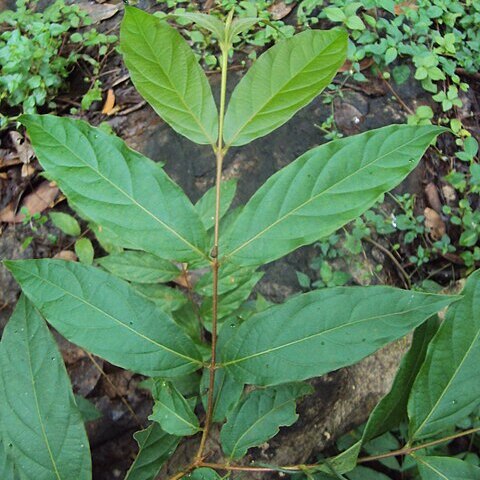A large climbing shrub. It can be 5-10 m long. The vines are 5-10 cm across. The bark is grey. The branches have thick fluffy layers in the surface. The leaves are oval and 5-12 cm long. New branches are hairy and rust coloured. The flowers are in dense clusters at the ends of branches. The fruit are fluffy and 8 mm long. They have 5 edges.



